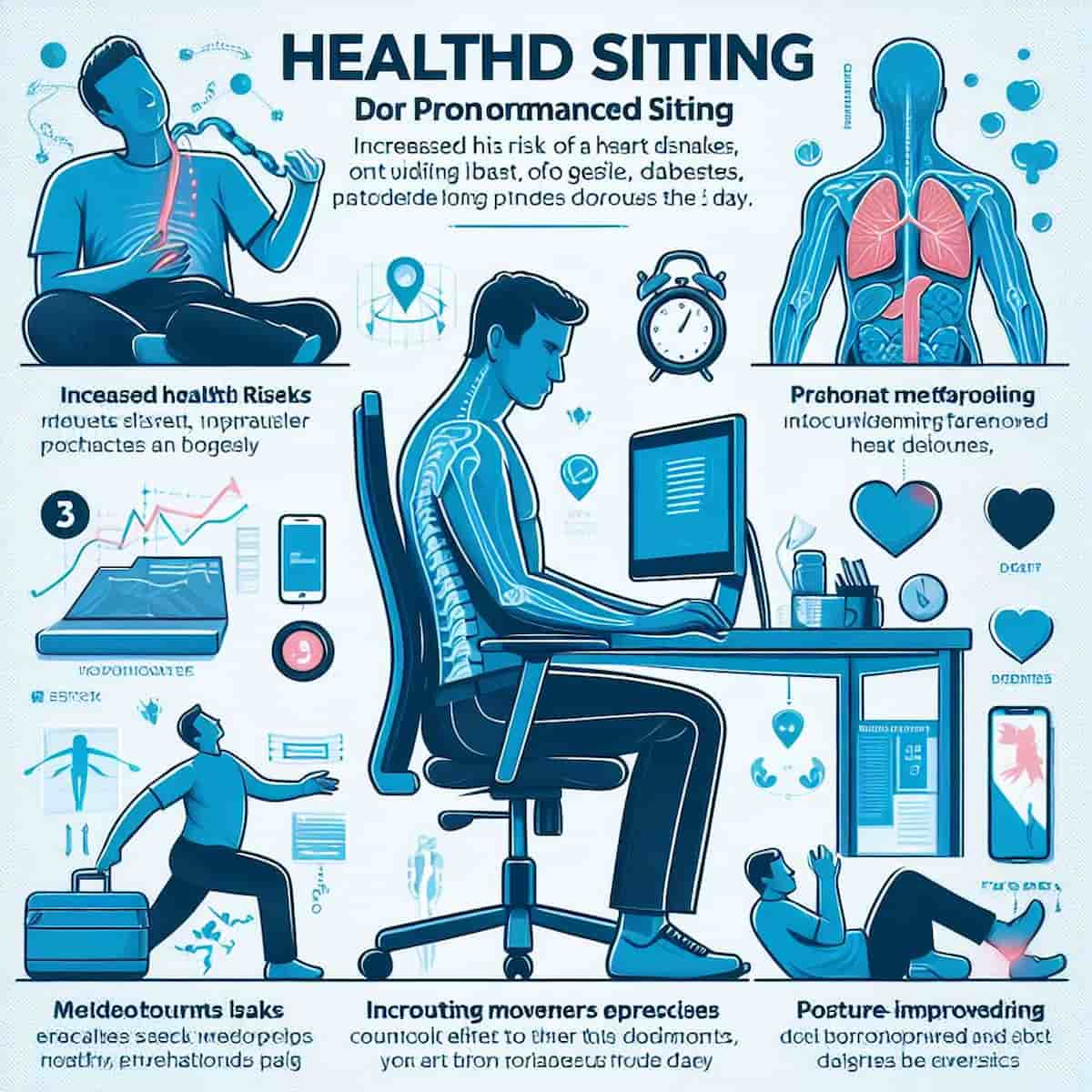Are you experiencing unexplained discomfort, fatigue, or health issues despite leading a seemingly normal lifestyle? It might be time to consider whether you’re falling victim to the insidious effects of sitting disease. Let’s explore the common symptoms associated with this modern-day affliction and empower ourselves with the knowledge to recognize and address them effectively.
Key Takeaways:
- Sitting disease, also known as sedentary behavior syndrome, manifests through a range of physical and mental symptoms resulting from prolonged sitting.
- Common symptoms include back, neck, and shoulder pain, fatigue, stiffness, weight gain, poor posture, and increased risk of chronic diseases.
- Recognizing these symptoms early empowers individuals to take proactive steps to mitigate the negative effects of prolonged sitting and improve overall well-being.
Unveiling the Symptoms:
Sitting disease can manifest in various ways, affecting both physical and mental health. Here’s a closer look at the telltale signs to watch out for:
1. Musculoskeletal Discomfort:
- Back Pain: Prolonged sitting can lead to muscle imbalances, tightness, and strain in the lower back.
- Neck and Shoulder Pain: Maintaining poor posture while seated can result in tension and discomfort in the neck and shoulders.
- Stiffness: Sitting for extended periods can cause stiffness and reduced flexibility in the muscles and joints.
2. Fatigue and Low Energy:
- General Fatigue: Sedentary behavior can contribute to feelings of fatigue and low energy levels, even after a full night’s sleep.
- Mental Fatigue: Excessive screen time and sedentary activities may lead to mental fatigue and decreased cognitive function.
3. Weight Gain and Metabolic Issues:
- Increased Body Fat: Lack of physical activity and reduced energy expenditure from prolonged sitting can contribute to weight gain and obesity.
- Metabolic Syndrome: Sedentary behavior is associated with metabolic syndrome, characterized by insulin resistance, high blood pressure, and abnormal cholesterol levels.
4. Poor Posture:
- Forward Head Posture: Spending hours hunched over screens can lead to forward head posture, causing strain on the neck and upper back.
- Kyphosis: Prolonged sitting may contribute to a rounded upper back, known as kyphosis, which can further exacerbate postural issues.
5. Mental Health Concerns:
- Anxiety and Depression: Sedentary behavior has been linked to higher rates of anxiety, depression, and overall psychological distress.
- Reduced Well-being: Spending excessive time sitting may negatively impact mood and overall sense of well-being.
Recognizing the Signs:
Being aware of these symptoms is the first step toward addressing sitting disease and reclaiming your health and vitality. If you notice any of these warning signs in yourself or others, consider taking proactive measures to counteract the effects of prolonged sitting. Incorporating regular movement breaks, practicing good posture, engaging in physical activity, and seeking ergonomic solutions can help alleviate symptoms and promote overall well-being.
Remember, small changes in daily habits can make a significant difference in combating sitting disease and improving quality of life. Listen to your body, prioritize movement and activity, and seek support from healthcare professionals if needed. By taking proactive steps to address sitting disease, you can unlock a healthier, happier, and more vibrant life.
















